Don't wanna be here? Send us removal request.
Text
How Can Google Ads Location Targeting Improve My Ads?
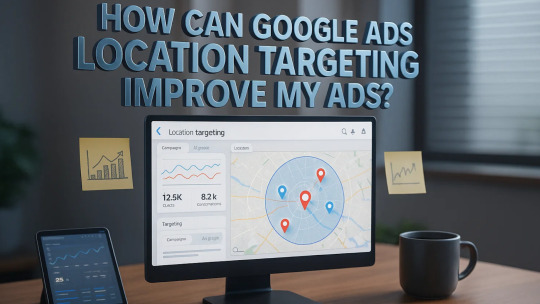
Are your ads reaching the right people, in the right place, at the right time?
If you're running paid campaigns but not seeing the results you expected, the issue might not be your ad copy or budget but your targeting. Specifically, location targeting can make or break the effectiveness of your Google Ads.
In this blog, we'll break down what Google Ads location targeting is, how it works, and how you can use it to get better results without wasting your ad spend.
What Is Google Ads Location Targeting?
Google Ads location targeting lets advertisers show ads to users in specific geographic locations. These can include countries, regions, cities, zip codes, or even a radius around a certain point on the map.
This feature is especially useful for:
Local businesses that serve a specific area
National campaigns targeting specific markets
E-commerce brands testing performance in different regions
Service providers catering to regional demand
Why It Matters:
You're not just saving money, you're increasing your chances of conversions. By narrowing your audience to the right locations, you speak directly to users who are more likely to engage.
How to Set Up Location Targeting in Google Ads
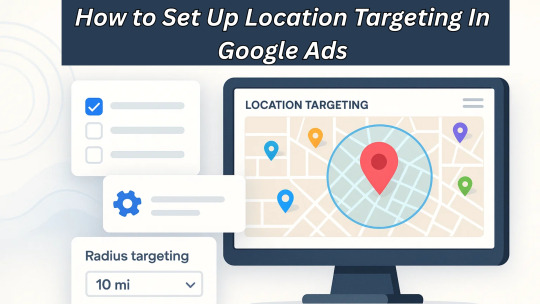
Setting up location targeting is simple if you follow these steps:
Log into Google Ads.
Choose the campaign you want to target.
Go to Settings > Locations.
Select the areas you want to target:
Country
Region or State
City
Postal Code
Custom Radius (in miles or kilometers)
Use the “Advanced search” to:
Add multiple areas at once
Exclude specific locations
Set radius targeting around a physical address
Save your changes.
Pro Tip: Use Google’s location reports to analyze performance by region and refine your targeting over time.
4 Smart Ways to Use Location Targeting to Boost Results
1. Target High-Converting Areas
If you notice certain cities or regions convert more than others, allocate more budget to those locations. Google Ads reports can show you this data under the “Locations” tab.
2. Exclude Low-Performing Locations
Why waste money in areas that don’t convert? Exclude specific regions to avoid wasted impressions and clicks.
3. Use Location-Specific Ad Copy
Tailor your ads to the audience’s region. Example:Instead of “Fast Plumbing Services,” try “Emergency Plumbing in Dallas – Call Now.” Localized copy builds trust and relevance.
4. Layer With Demographics or Devices
You can combine Google Ads location targeting with other settings like age, household income, device type, or even use Google Ads Scripts to automate and optimize these powerful audience segments.
Benefits of Google Ads Location Targeting
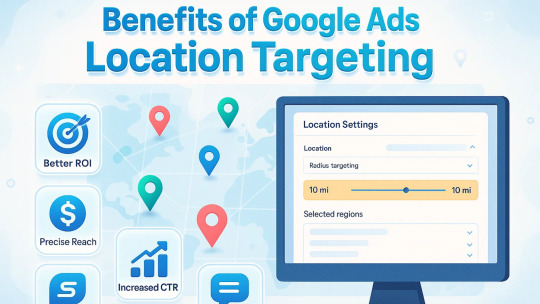
Reduces wasted ad spend on users unlikely to convert
Improves click-through rates (CTR) by showing ads to relevant users
Boosts ad conversion rates by focusing on ready-to-buy audiences
Enables regional A/B testing to discover your best-performing markets
Supports local SEO and foot traffic for physical locations
When used correctly, google ads location targeting helps advertisers maximize ROI by aligning ads with real-world intent and context.
Common Mistakes to Avoid
Targeting too broadly: Don’t select an entire country if only 10% of it is relevant to your business.
Ignoring excluded locations: Use negative locations to prevent irrelevant clicks.
Forgetting about mobile users: A user might be physically located in your target area but searching for another area factors both in your settings.
You can also watch : Revolutionize Ads with PowerAdSpy's Smart Insights
youtube
Conclusion: Make Every Click Count
Google Ads location targeting is one of the most powerful features available to advertisers. Whether you’re a small business owner or managing campaigns for clients, strategic geographic targeting can dramatically improve your ad performance.
Start small. Test locations. Exclude non-performers. Use the data to scale what works.
FAQs
1. What is the difference between presence and interest in location targeting?
Presence targets users physically in the location.
Interest targets users who show interest in a location (e.g., searching for hotels in New York from Los Angeles).
2. Can I exclude areas within a targeted region?
Yes. You can target a country but exclude specific cities or zip codes within that country.
3. How can I track the performance of location-targeted ads?
Use the “Location” and “User Location” reports under the campaign settings to monitor metrics like impressions, clicks, and conversions by area.
#google ads targeting#google ads#location targeting#geotargeting google ads#geotargeting ads#Youtube
0 notes
Text
What Are the Benefits of an Ecommerce Marketplace?

In today’s hyperconnected world, the digital economy thrives on convenience, variety, and speed. At the heart of this revolution lies a transformative concept: the ecommerce marketplace. But what are the benefits of an e-commerce marketplace that make it such an indispensable model for modern commerce?
The answer lies in its capacity to blend technology, scalability, and consumer behavior into a seamless digital experience. For sellers and buyers alike, e-commerce platform have redefined the rules of engagement, offering unmatched access, efficiency, and opportunity.
A Universe of Products Under One Digital Roof
E-commerce platforms like Amazon, eBay, Flipkart, and Etsy provide a unified platform where countless vendors converge to offer products ranging from daily essentials to luxury goods. This wide assortment is not just a matter of quantity—it reflects the platform’s ability to anticipate and satisfy diverse consumer demands.
Why It Matters:Buyers no longer need to surf multiple websites. They find everything in one place—convenient, quick, and reliable. This consolidated experience enhances customer loyalty, boosts repeat purchases, and significantly reduces cart abandonment.
Empowering Sellers with Robust Digital Infrastructure
What are the benefits of an e-commerce platform for sellers? One of the most compelling advantages is access to sophisticated tools without the burden of building an entire eCommerce ecosystem from scratch.
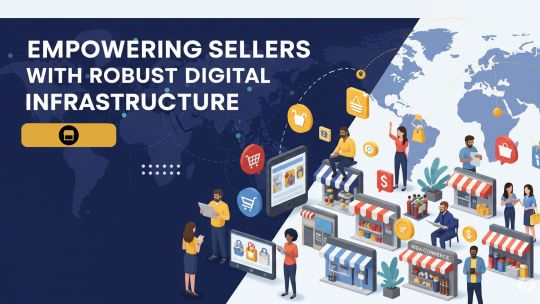
Notable Features & Specs:
Built-in SEO optimization to increase product discoverability
Real-time analytics and sales reports for informed decision-making
Automated inventory and order management
Seamless integration with logistics and payment gateways
Secure checkout systems to ensure consumer trust
These platforms democratize retail by enabling even micro-entrepreneurs to reach a global audience using enterprise-level infrastructure.
Scalability Without Complexity
Scaling an online store independently requires substantial investment in marketing, logistics, customer service, and security. E-commerce platform remove these barriers by providing plug-and-play solutions.
Why It Matters:Whether you're a solo artisan or a mid-sized enterprise, marketplaces let you scale organically. You sell more, ship more, earn more—without worrying about backend complexities. This freedom allows sellers to focus purely on product quality and customer satisfaction.
Instant Access to a Pre-Built Customer Base
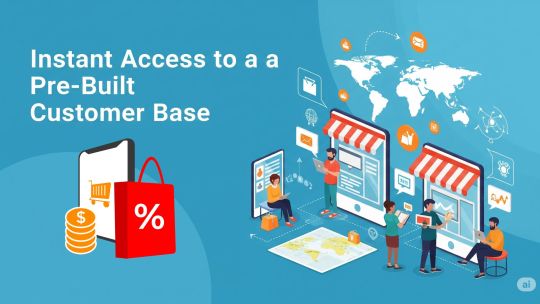
Launching a standalone website means starting from ground zero—building traffic, trust, and brand awareness takes time. In contrast, the best e-commerce platforms already have massive, engaged audiences.
Why It Matters:Sellers can instantly tap into this traffic, accelerating visibility and sales. A buyer who might never stumble upon your private website could easily discover your product through a simple search on a marketplace. It's an ecosystem that bridges businesses and buyers faster than traditional e-commerce ever could.
Trust, Transparency & Transactional Security
Consumers are wary when buying online, especially from lesser-known vendors. E-commerce platforms mitigate this apprehension through secure payment systems, return policies, and verified reviews.
Why It Matters:The built-in trust mechanisms of these platforms make users more likely to convert. Ratings and reviews not only inform buying decisions but also act as social proof, fueling credibility for new or small-scale sellers.
Mobile Optimization and Omnichannel Reach
Modern consumers shop across devices—laptops, tablets, and smartphones. Leading e-commerce platforms are inherently mobile-optimized, offering native apps and responsive platforms.
Key Software Importance:
Streamlined mobile UI for seamless navigation
Push notifications to drive repeat purchases
Integrated AI recommendations for personalized experiences

Why It Matters: This omnichannel marketing increases touchpoints with users and improves the chances of engagement. In an era where attention spans are short and choices are endless, mobile optimization is not a luxury—it’s a necessity.
Data-Driven Insights and Agile Operations
Marketplaces provide sellers with real-time data on performance, customer behavior, and market trends. This intelligence is critical for agile decision-making and business strategy.
Why It Matters: Understanding what sells, who buys, and when demand spikes allows businesses to optimize stock, pricing, and promotional strategies. This level of responsiveness is a defining trait of modern retail success.
youtube
Final Thoughts
In essence, the ecommerce marketplace model is a catalyst for business empowerment and consumer satisfaction. It levels the playing field, offering small businesses a global stage and providing consumers with unparalleled choice and convenience.
What are the benefits of an marketplace? Simply put: increased visibility, streamlined operations, faster growth, and customer trust—all bundled into a tech-powered ecosystem that’s reshaping the future of commerce.
Whether you’re looking to launch your first product or scale your retail empire, embracing the marketplace model could be your most strategic move yet.
FAQs
1. How does selling on an ecommerce marketplace benefit small businesses? Selling on an ecommerce marketplace allows small businesses to reach a wider audience without the high upfront costs of creating and maintaining their website. These platforms provide ready-to-use tools for inventory, payment processing, logistics, and customer service—empowering small sellers to focus on scaling their business efficiently.
2. Are ecommerce marketplaces safe for buyers and sellers? Yes, most ecommerce marketplaces have robust security features such as secure payment gateways, fraud detection, and buyer protection policies. For sellers, they offer reliable transaction handling and fraud mitigation systems, while buyers benefit from verified reviews, return policies, and customer support.
3. Can I scale my business faster using an ecommerce marketplace? Absolutely. Ecommerce marketplaces provide access to a massive, pre-existing customer base and powerful marketing tools like ads, discounts, and analytics. These features enable businesses to scale quickly without investing heavily in independent infrastructure or marketing channels.
4. Do e-commerce marketplaces support mobile shopping experiences? Yes, leading ecommerce marketplaces are fully optimized for mobile devices through responsive websites and dedicated apps. They enhance the customer journey with features like push notifications, mobile-friendly search, and personalized product recommendations—making it easier for users to shop on the go.
0 notes
Text
Are Your Facebook Ad Objectives The Strategic Foundation Behind Your Campaign Results?
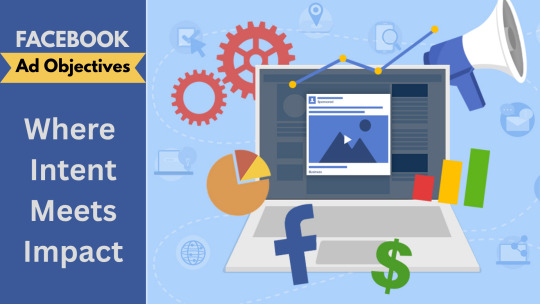
When launching a Facebook campaign, it’s easy to get caught up in visuals and copy—but everything begins with one defining choice: your Facebook ad objectives. This foundational setting determines how your ads are optimized, who sees them, and what action Facebook prioritizes. Overlook it, and even great creatives can fall flat. In this article, you’ll discover how selecting the right objective aligns your campaign with real business goals, transforming intent into impact with clarity and control.
What Is a Facebook Ads Campaigns Objective?
A Facebook Ads Campaigns Objective is the specific outcome you want from your campaign. It tells Facebook’s algorithm what to prioritize—whether it's driving traffic, generating leads, boosting engagement, or increasing conversions.
Facebook offers three broad categories of objectives:
Awareness (brand awareness, reach)
Consideration: Drives interest through traffic, engagement, app installs, video views, leads, and messages.
Conversion (conversions, catalogue sales, store traffic)
Each objective activates a unique delivery algorithm that targets users most likely to perform the intended action.
Why Choosing the Right Objective Matters
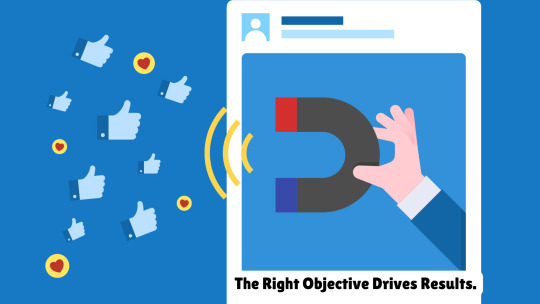
The Facebook ad algorithm is designed to optimize your campaign for the selected objective. That means if you choose "Traffic," Facebook will show your ad to users likely to click—not necessarily convert. If you choose "Conversions," Facebook targets those more likely to take action, like making a purchase or signing up.
A misaligned objective won’t just waste budget—it can distort your campaign data and result in misleading KPIs. That’s why selecting your Facebook Objectives with intention is essential for achieving meaningful results.
How to Choose the Right Campaign Goal for Better Ad Performance
Selecting the right objective depends entirely on the core goals you aim to achieve with your campaign. Start by asking:
Am I aiming to increase visibility or inspire a specific response?
Am I focused on short-term conversions or long-term visibility?
Which phase of the marketing funnel is my audience currently navigating?
Here’s a simplified framework:

#1. Awareness Stage (Top of Funnel)
Use this when introducing your brand to a new Facebook target audience unfamiliar with your products or services.
Best Objectives: Brand Awareness, Reach
#2. Consideration Stage (Middle of Funnel)
Choose this when trying to educate or engage users who know you.
Best Objectives: Traffic, Video Views, Lead Generation, Engagement
#3. Conversion Stage (Bottom of Funnel)
Best suited for audiences who are already engaged and prepared to convert.
Best Objectives: Conversions, Catalogue Sales, Store Traffic
By mapping objectives to the customer journey, you ensure each campaign speaks to where your audience actually is, not where you want them to be.
Common Mistakes Advertisers Make with Objectives
Many new advertisers select objectives based on vanity metrics (e.g., likes or clicks) rather than business goals. Others assume “reach” means more results, but wide exposure doesn’t always equal high impact. And often, switching objectives mid-campaign without resetting learning phases can confuse Facebook’s algorithm.
Avoid these common pitfalls:
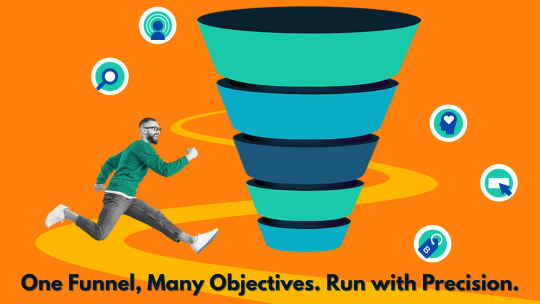
Don’t use Engagement if you want sales
Don’t expect Traffic to deliver conversions
Don’t rely on a single objective for full-funnel performance
It’s better to run multiple campaigns with distinct objectives for each funnel stage.
What Happens If You Choose the Wrong Objective?
Facebook will still deliver your ads, but to the wrong people, at the wrong time, for the wrong action. You might see high impressions or even clicks, but no real results. Worse, the data you collect becomes noisy, making it hard to optimize future campaigns.
That’s why your selected objective serves as a strategic lens, shaping how your ads perform and how their impact is understood. You can also watch : Introducing 'My Projects' | PowerAdSpy’s New Way to Create Competitors List
youtube
Final Thoughts: Set Your Strategy Before You Spend
Facebook ad objectives aren’t just a starting point—they’re the strategic core of every campaign you run. While many advertisers rush into creatives and targeting, it’s the chosen objective that tells Facebook what outcome to prioritize and who to show your ads to. Each objective serves a different purpose, shaping how your message is delivered and how success is measured. If you're unclear about which one aligns with your goals, this guide will help you navigate the options, so your campaigns are driven by intention, not assumption.
Frequently Asked Questions (FAQ)
What are the best Facebook Ads Campaign Objectives for sales?
Conversions are the best objective when your goal is to drive purchases or sign-ups.
Can I change my ad objective mid-campaign?
No, once a campaign is created, you can't change its objective. You’ll need to start a new campaign.
What if I just want brand visibility?
Use Brand Awareness or Reach to maximize exposure without focusing on clicks or conversions.
Do objectives affect cost?
Yes. Objectives that optimize for high-value actions (like conversions) typically cost more but deliver higher quality results.
Should I run different objectives for different goals?
Absolutely. Tailoring objectives to each goal ensures more accurate targeting, clearer insights, and better ROI.
#facebookadobjective#adobjectivesonfacebook#bestfacebookadobjective#pickingfacebookadobjectives#facebookadcampaigns#Youtube
0 notes
Text
Mastering Campaigns With Instagram Ads Manager: Your Gateway To Digital Dominance
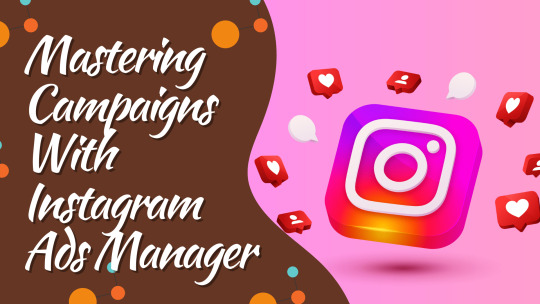
In the expansive landscape of digital marketing, precision and personalization reign supreme. Businesses no longer rely on guesswork to reach their audience—they demand strategic tools that operate with accuracy, insight, and flexibility. Among the titans of modern advertising platforms, Instagram Ads Manager has carved a unique niche. This powerhouse doesn’t just promote—it curates, strategizes, and amplifies messages in a way that mirrors the sophistication of today’s consumer behavior. A campaign that lacks intelligent targeting is simply noise; with this tool, marketers orchestrate symphonies.
Elevating Brand Presence through Visual Intelligence

At its core, Instagram is a visually-driven platform, where aesthetics, storylines, and relevance converge. The software capitalizes on this environment by empowering users to create impactful ads embedded within the natural scroll of content consumption. Whether through Stories, Reels, or carousel posts, Ads Manager ensures your visuals are not just seen—but remembered. Every feature within the tool is designed to support artistic storytelling combined with data-driven targeting.
Marketers can meticulously choose objectives such as awareness, consideration, or conversion, each tailored to a strategic funnel. With this, the software establishes itself not just as a placement utility, but as an orchestrator of brand narratives. Ads are no longer interruptions—they’re experiences.
Deep Targeting and Smart Analytics

The magic of advertising lies not only in creativity but also in its analytical spine. Ads Manager grants users access to audience segmentation that’s both broad in reach and granular in focus. From demographic indicators to behavioral traits, interests, and ad engagement patterns, advertisers are able to sculpt their audience with mathematical precision.
One of its most revered specifications is its ability to retarget users who have previously interacted with your content—turning passive interest into actionable momentum. Add to this the machine-learning powered ad optimization, and campaigns practically evolve in real time. The software continually learns, adjusts, and prioritizes ad sets that yield higher performance, offering marketers a real-time feedback loop unlike any other.
The Interface: Where Simplicity Meets Sophistication
Software often straddles a fine line between being user-friendly and functionally advanced. This platform masterfully balances both. Its clean dashboard offers intuitive navigation while still housing a sophisticated array of campaign tools. You can set budgets—daily or lifetime—schedule ads to run on optimal days and times, and preview every creative unit before deployment.
Built-in performance metrics such as cost per result, link clicks, impressions, and reach help monitor effectiveness with astonishing clarity. The interface encourages users to make informed adjustments on the fly, removing the guesswork from campaign management.
Cross-Platform Synergy and Integration

Perhaps one of the most underrated yet powerful features of Ads Manager is its seamless integration with Facebook's broader advertising ecosystem. This cross-platform synergy means marketers can manage both Instagram and Facebook event ads within the same console, leveraging overlapping insights for better strategy alignment. The power of unified data ensures that ad spend is not just optimized—it’s maximized.
Moreover, integrations with tools like Shopify, Mailchimp, and HubSpot offer further leverage. This allows businesses to streamline customer acquisition strategies while maintaining a consistent brand tone across platforms.
Relevance in the Attention Economy
In a marketplace saturated with content, relevance is the currency of influence. Here’s where Ads Manager proves indispensable. Its algorithmic intelligence ensures that your content doesn’t just reach a crowd—it reaches the right crowd. Timely delivery, paired with emotional visual appeal, creates a ripple effect of engagement, shares, and conversions.
By employing lookalike audiences and analyzing campaign insights, brands can replicate their most effective strategies with ease. In this age of rapid scrolls and shorter attention spans, the platform helps transform casual viewers into brand advocates.
You can also watch: How To Search Instagram Ads Using PowerAdSpy: A Step-by-Step Guide
youtube
Conclusion: A Necessity, Not an Option
For any brand seeking to elevate its digital footprint, embracing Instagram Ads Manager is not a mere option—it is a necessity. The software doesn’t just facilitate advertising; it refines it. With its vast feature set, user-centric interface, and relentless focus on personalization, it arms businesses with the tools to thrive in a competitive digital economy.
Whether you're a startup finding your voice or a legacy brand refreshing your narrative, this tool offers the clarity, control, and creativity needed to resonate—and convert.
0 notes
Text
Mastering The Future Of Marketing With DSP Advertising: A Comprehensive Guide
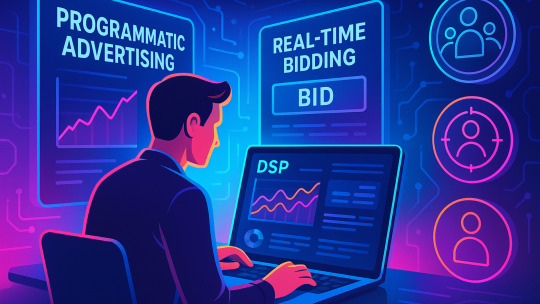
In the ever-evolving digital marketing arena, one term stands out for its transformative potential—DSP. It’s not merely a trend but a profound shift in how brands connect with their audience in real time. As businesses strive to outpace competition and captivate their customers, adopting advanced tools becomes essential. Advertising embodies this evolution, promising precision, efficiency, and unparalleled reach for modern marketers.
Introduction: The Age of Intelligent Advertising
Marketing today demands more than creative slogans and flashy visuals. It calls for data-driven strategies that predict consumer behavior and deliver the right message at the perfect moment. This is where Advertising enters the stage with commanding authority. By automating media buying and optimizing ad placements in real-time, DSP Advertising platforms empower advertisers to deliver hyper-targeted campaigns with minimal waste.
But this isn’t just about automation. It’s about revolutionizing the art and science of advertising by merging cutting-edge technology with human creativity. Through Advertising, brands gain a competitive edge, elevating their marketing from guesswork to a measurable, strategic endeavor.
What is DSP Advertising? An Intellectual Dissection
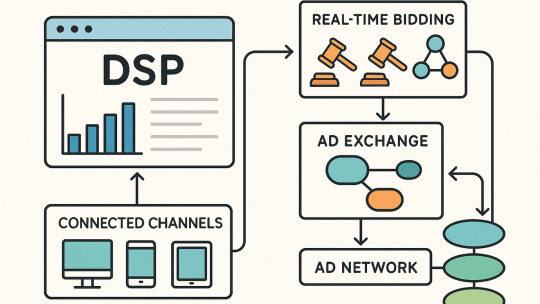
A Demand-Side Platform (DSP) is sophisticated software that allows advertisers to purchase digital ad inventory across multiple channels through a single interface. Unlike traditional methods of buying ads from individual publishers, a DSP connects advertisers to a vast pool of ad exchanges, making the entire process seamless and cost-effective.
Advertising harnesses real-time bidding (RTB) technology, combined with Online Advertising strategies, to deliver precisely targeted promotions in mere milliseconds. This approach ensures that brands connect with their ideal audience exactly when intent is highest. Such remarkable speed and targeting accuracy far surpass what traditional, manual negotiations can achieve, representing a significant advancement in advertising intelligence.
Key Features and Specifications of DSP Advertising Software
Let’s delve into the powerful features that make DSP software indispensable:
1. Real-Time Bidding (RTB)
DSPs utilize RTB to buy ad impressions in real-time auctions. This ensures advertisers pay only for the most relevant impressions, optimizing budget allocation with scientific precision.
2. Advanced Targeting Capabilities
DSPs allow granular audience segmentation based on demographics, interests, location, device type, browsing behavior, and more. This hyper-targeting ensures that campaigns resonate with the most receptive audience.
3. Cross-Channel Campaign Management
Modern DSPs support advertising across channels including display, mobile, video, social, and connected TV (CTV), all from one centralized dashboard. This unification simplifies workflow and amplifies impact.
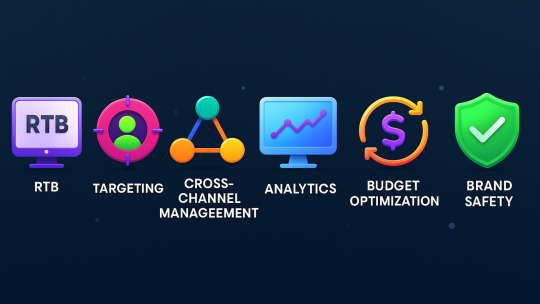
4. Robust Analytics and Reporting
DSP software delivers comprehensive analytics, empowering marketers to monitor performance in real time. By integrating SEO Ads strategies, it offers customizable reports and actionable insights, enabling campaigns to be continuously optimized for exceptional results.
5. Budget Control and Optimization
Intelligent budget pacing, bid adjustments, and predictive algorithms ensure that advertisers get the best ROI. DSPs automate these processes to eliminate human error and maximize efficiency.
6. Fraud Prevention and Brand Safety
Integrated fraud detection tools and brand safety measures protect advertisers from invalid traffic and inappropriate placements, maintaining the integrity of their brand.
Importance of DSP Advertising in Modern Marketing
Why is Advertising not just a luxury but a necessity in the modern marketing toolkit? Because it brings transparency, efficiency, and precision that were previously unattainable. With consumers bombarded by thousands of ads daily, relevance is key. DSPs make this relevance possible by ensuring that every dollar spent targets the right person at the right time.

Moreover, DSP democratizes high-level marketing strategies that were once exclusive to giant corporations with massive budgets. Today, even small and medium businesses can compete on equal footing by leveraging data, automation, and programmatic buying.
How to Choose the Right DSP Advertising Platform
Given the market’s proliferation of DSP solutions, choosing the right platform is critical. Marketers should consider:
Ease of Use: An intuitive interface that streamlines campaign setup.
Data Integrations: Compatibility with first- and third-party data sources.
Inventory Access: Availability of premium inventory across channels.
Transparency: Clear pricing and reporting structures.
Support: Responsive customer service and training resources.
By carefully evaluating these factors, businesses can ensure they select a DSP that aligns with their strategic goals and operational capacity.
You Can Also Watch :-
youtube
Conclusion: Embracing the Future with DSP Advertising
In an age where marketing success hinges on agility, intelligence, and personalization, DSP is more than software—it’s a strategic imperative. It transforms advertising from a reactive expenditure into a proactive investment, unlocking insights that fuel long-term growth.
If you’re ready to elevate your marketing game, now is the time to explore DSP Advertising. Harness its power to deliver meaningful, measurable, and memorable campaigns that truly resonate with your audience. The future of advertising isn’t coming—it’s already here. Make sure your brand is ready to lead it.
#dsp advertising#demand side platform#dsp ads#dsp programmatic advertising#dsp advertising platform#Youtube
0 notes
Text
Is Your Ad Copy Costing You Clicks or Cash?
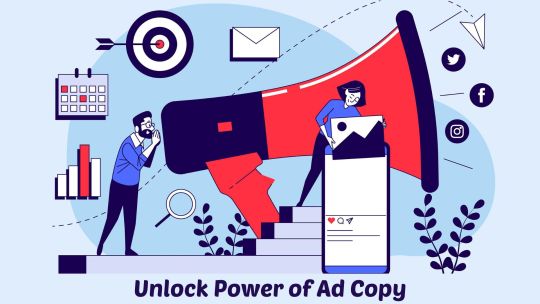
In today’s hyper-stimulated digital world, attention is the rarest form of currency. Your audience is not just scrolling—they’re sifting, scanning, and subconsciously filtering every piece of content that crosses their eyes. In this landscape, your ad copy is either a magnet—or it's mute. If it fails to stop the scroll, it fails altogether. But what if the real cost of an underperforming copy isn’t just a missed impression—it’s a missed opportunity, a lost customer, or a wasted ad budget?
In an era where milliseconds determine engagement, mediocrity in messaging is not just ineffective—it’s expensive. Every line, every phrase, every call-to-action carries the weight of your brand’s voice. When your copy lacks clarity, emotional pull, or strategic intent, you're not just failing to connect; you're actively pushing potential customers away. The competition isn’t waiting—they’re winning attention with sharper words, stronger hooks, and smarter delivery.
The Psychology Behind the Click
Great marketing doesn’t sell products. It sells outcomes, feelings, and solutions. That’s where compelling ad language plays a defining role. Human psychology is hardwired to respond to certain cues—urgency, novelty, clarity, and resonance. When your messaging lacks these elements, even the best product can fall through the cracks. The cost? Silent ads. Flat CTRs. An algorithm that turns against you.

The sad truth is: poorly constructed campaign copy doesn’t just perform poorly—it performs negatively. It drains budgets, dilutes brand trust, and disrupts conversion pipelines. Yet, this is where many advertisers unknowingly bleed resources.
To truly influence clicks, your messaging must align with the subconscious desires of your audience—security, belonging, achievement, or transformation. It's not just about what you say, but how intuitively it echoes what they’re already feeling or fearing. The best-performing Audience-targeted content subtly mirrors the internal dialogue of the consumer, making them feel understood before they even realize it. This psychological alignment doesn’t just increase clicks—it builds brand affinity and long-term trust.
A Smarter Solution: AI-Powered Ad Engines
Enter intelligent copywriting assistants—software that uses machine learning and linguistic optimization to craft compelling messaging tailored to your target audience. Unlike static templates, these platforms evolve by analyzing real-time engagement data and continuously refining their output. One such tool integrates sentiment analysis, A/B testing algorithms, and intent prediction—all embedded in a user-friendly dashboard. It doesn’t just generate words—it generates relevance.
Key specs include:
Real-time Performance Analytics: Optimize copy based on live campaign metrics

Audience Behavior Modelling: Craft ads that mirror user intent and emotional triggers
Adaptive Language Frameworks: Dynamic phrasing based on campaign goals and performance history
Integration with Ad Platforms: Sync directly with Google Ads, Meta, and LinkedIn
What’s the result? Increased click-through rates, reduced CPC, and a measurable uptick in ROI. More importantly, it saves brands from the trial-and-error chaos of manual experimentation.
The Strategic Edge: Beyond Words
Great promotional content isn’t about cleverness—it’s about clarity fused with psychology. It must answer key questions: Why should the user care? What problem does this solve? Why now? Good copy creates movement. Exceptional copy creates momentum. Understanding how to write ad copy means mastering the art of relevance, emotion, and timing—all working together to inspire action.

Brands that invest in intelligent messaging systems are not just writing better—they’re thinking better. Their campaigns move with precision. Their metrics improve holistically, from engagement to retention. And their messaging doesn’t guess—it calculates.
This strategic shift from intuition to intelligence transforms how brands communicate value. By leveraging behavioral insights and performance data, businesses can craft content that not only attracts attention but sustains it through relevance and resonance. The result is messaging that speaks directly to the customer’s mindset—driving not just clicks, but meaningful connections that evolve into loyalty.
You can also watch: How to Search Google Ads using PowerAdSpy: A Step-by-Step Tutorial Series
youtube
Final Thoughts: Compelling Copy is a Catalyst for Campaign Growth
The line between good and exceptional advertising often lives in the narrow space between a phrase and a user’s decision to click. Within that brief window, emotion, clarity, and perceived value must align seamlessly. Yet, this is precisely where countless campaigns falter—not because the product is weak, but because the message fails to resonate.
Before launching your next ad, take a step back and ask: Is my ad copy amplifying my message—or undermining it?
In digital marketing, words aren’t just tools—they’re triggers. The right copy doesn’t simply inform; it inspires action, builds momentum, and turns impressions into impact. Invest in messaging that thinks, adapts, and performs—because when words work, everything else follows.
0 notes
Text
Are Call to Action Examples the Secret Formula Behind High-Converting Digital Campaigns?

In the digital marketing universe, where every scroll, click, and second of attention holds immense value, a campaign’s effectiveness often hinges on a single element — the call to action. It's more than just a button or a phrase; it’s the bridge between interest and action. In today’s crowded online space, mastering the art of crafting powerful call to action examples can spell the difference between passive viewers and paying customers.
The journey from awareness to conversion is filled with distractions, choices, and hesitations. Amidst all this noise, a strategically placed CTA — whether on a landing page, email, social ad, or product listing — can guide users toward meaningful decisions. In fact, without an effective call to action, even the most beautifully designed marketing assets risk falling flat.
The Psychology Behind an Effective CTA

At its core, a call to action is not just about telling people what to do — it’s about convincing them why they should do it. Effective CTAs tap into psychological triggers: urgency, curiosity, exclusivity, and benefit-driven intent. Words like “Get Started Today,” “Unlock Your Free Trial,” or “Join the Movement” aren’t just commands — they’re emotional nudges.
This microcopy, though small in size, plays a massive role in user experience and decision-making. It reassures, motivates, and directs — often within a single line.
Platforms That Elevate CTA Performance
To truly optimize CTAs at scale, marketers are turning to sophisticated digital solutions that seamlessly integrate into websites, email campaigns, and online advertising. These tools are not just about inserting clickable elements — they are engineered to analyze user behavior, personalize content delivery, and drive precise engagement.

Today’s CTA optimization platforms come equipped with dynamic targeting capabilities, allowing marketers to tailor messages based on user history, session data, and device type. They enable real-time A/B testing, where multiple versions of a call to action can be launched simultaneously to measure performance metrics such as click-through rates, conversions, and time-on-page.
What sets these tools apart is their ability to intelligently position CTAs using behavioral triggers — such as scroll percentage, idle time, or exit intent — ensuring that the prompt appears exactly when the user is most likely to engage. With intuitive interfaces, advanced social media analytics dashboards, and seamless integration into marketing funnels, these platforms transform static messages into adaptive, high-performing interaction points.
In essence, modern CTA software doesn’t just manage buttons — it leverages design science, behavioral psychology, and data precision to turn simple actions into strategic business outcomes.
Placement and Design — More Than Just Visuals

Beyond the message, where and how your CTA appears is critical. CTAs need to be visible without being intrusive, persuasive without being aggressive. Button color, font size, whitespace, and even animation can influence effectiveness.
Heatmap tools like Hotjar and Crazy Egg help marketers visualize where users click most, revealing if your CTA is being seen — and acted upon. Meanwhile, scroll tracking tools ensure your CTA placement aligns with where users actually engage.
For mobile-first audiences, responsiveness is non-negotiable. A CTA should load quickly, fit seamlessly on small screens, and be easy to click with a thumb. Accessibility also matters — using contrasting colors and alt text ensures CTAs are inclusive for all users.
Examples That Leave an Impact
Netflix: “Join Free for a Month” – Offers a no-risk invitation with immediate value.
Spotify: “Get Premium” – Straightforward and benefit-driven, appealing to users ready to upgrade.
Airbnb: “Become a Host” – Shifts the focus from the company to the user’s potential gain.
Slack: “Try for Free” – Removes financial hesitation and encourages exploration.
Each of these call to action examples doesn’t just instruct — it empowers.
Why CTAs Deserve Strategic Focus
Too often, CTAs are treated as an afterthought. But in reality, they are the closing pitch. They seal the deal. An overlooked or generic CTA can undermine an otherwise brilliant campaign. On the other hand, a well-crafted CTA can uplift engagement rates, reduce bounce, and ultimately drive revenue.
A strong call to action is not just functional — it's emotional, data-informed, and purposefully designed. It aligns with brand voice, mirrors user intent, and pushes action in the most seamless manner.
You can also watch:-How to Search Google Ads using PowerAdSpy: A Step-by-Step Tutorial Series
youtube
Conclusion
So, are call to action examples the secret formula behind high-converting digital campaigns? Unquestionably, yes. In a marketing world obsessed with visuals and storytelling, it’s often this tiny line of text that carries the biggest weight. Whether you’re launching a product, generating leads, or building a community — your CTA is the final, powerful whisper that turns interest into action. And when crafted with strategy, software support, and a deep understanding of user psychology, it doesn’t just get clicks — it creates momentum.
0 notes
Text
Is Google Ads PPC Still the Most Intelligent Investment for Digital Marketers Today?

In the fast-paced digital arena where visibility often dictates viability, standing out isn’t optional — it’s essential. With countless brands vying for attention, reaching the right user at the right time has evolved from mere strategy into a science. Amidst all the evolving tools and platforms, Google Ads PPC has managed to retain its crown — not through luck, but through its inherent intelligence, precision, and power.
From startups looking to get their first customer to global enterprises optimizing for efficiency at scale, Google’s Pay-Per-Click system remains one of the most streamlined and measurable advertising ecosystems. But what really sets it apart? And why do seasoned digital marketers still rely on it as their go-to arsenal in an ever-competitive online world?
Understanding the Digital Mindspace
Before diving into the software’s technicalities, it’s crucial to comprehend the shift in consumer behavior. Today’s users don’t browse idly — they search with intent. Whether it’s a product, a service, a solution, or even just an idea, people turn to Google as their first port of call. This transition from passive scrolling to active seeking redefines how advertising should work — not as a nudge, but as a direct answer.
This is where Google Ads PPC fits in — not as a noisy salesman, but as a helpful guide at the exact moment of need.
A Software System Built on Precision
At its core, Google Ads is engineered to perform. Its real strength lies in its precision targeting, budget flexibility, and result-driven architecture. Advertisers can bid on keywords that align directly with their offerings, ensuring their ads appear only when a user’s intent matches their message.
The platform’s features are tailored to deliver measurable value:
Keyword Targeting: Create campaigns around exact, broad, or phrase-match keywords to tailor visibility.
Ad Extensions: Add clickable links, call buttons, site links, location info, or structured snippets to make your ad more informative and dynamic.
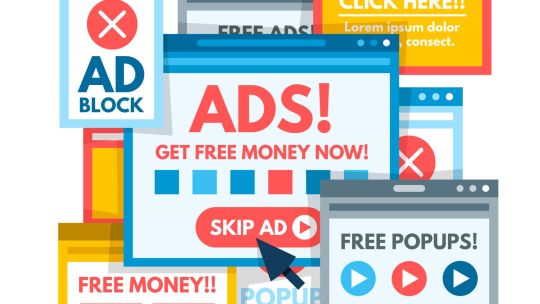
Smart Bidding: Leverage Google’s machine learning to optimize bids automatically for clicks, conversions, or return on ad spend.
Geo-Targeting: Pinpoint locations down to specific cities, zip codes, or radius ranges, ensuring your budget is spent only where it matters.
A/B Testing Capabilities: Run split tests for ad creatives, headlines, or landing pages to continually refine messaging and performance.
Deeper Intelligence with Real-Time Analytics

Perhaps one of the most intellectually stimulating aspects of this system is its real-time analytics suite. Every campaign is tracked — from impressions and clicks to conversion values and cost per result. This live feedback allows businesses to shift strategies mid-campaign, halt what isn’t working, and double down on what is. The learning curve becomes a learning engine — and this is a rare feature in a field often driven by post-campaign data lag.
Moreover, through integration with tools like Google Analytics and Google Tag Manager, businesses can trace a user’s journey from ad click to purchase, offering insights that are not just valuable — but transformative.
Budgeting Intelligence — No Wasted Spend
Contrary to belief, success with google ads for business doesn’t require massive budgets. Its brilliance lies in its scalability. A new entrepreneur can start with ₹500 a day, while a national brand can spend ₹5 lakh a week — both can track results and measure ROI with equal granularity.
Every rupee spent is accountable. Unlike traditional media where you pay for potential reach, Google Ads makes you pay for performance — and only when someone clicks. This transforms advertising from speculative spending into a calculable investment.
Importance in the Evolving Marketing Ecosystem

In an age of marketing automation, AI-generated content, and fragmented attention, relevance is the only currency that counts. Google Ads continues to deliver this by placing businesses at the intersection of relevance and action.
Not only does it let businesses reach customers who are ready to convert, but it also allows for strategic control over tone, targeting, and timing. When executed correctly, it becomes more than just an ad — it becomes the digital equivalent of showing up at the exact moment someone needs you.
You can also watch:- How to Search Google Ads using PowerAdSpy: A Step-by-Step Tutorial Series
youtube
Final Verdict
So, is Google Ads PPC still the most intelligent investment for digital marketers today? Unquestionably, yes. In a marketing landscape dominated by distraction, its power lies in precision. It offers businesses the chance not to interrupt but to answer. Not to chase leads but to receive intent. And not to waste budgets, but to optimize impact. For any brand serious about measurable growth and meaningful customer connections — it remains not just relevant, but essential.
0 notes
Text
Are Technology Ads the New Storytellers of Innovation?
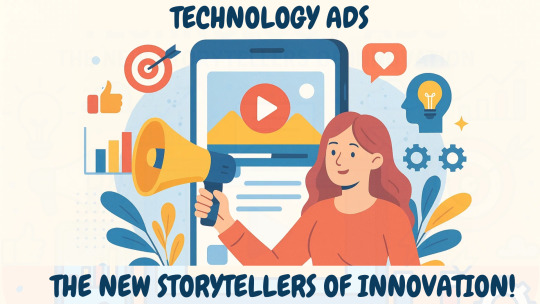
In an era defined by short attention spans and information overload, storytelling has become the cornerstone of impactful advertising. Yet, showcasing advanced technologies—often technical and intangible—poses a unique challenge. Can narrative alone make these innovations relatable? Indeed, it can. Today’s technology ads have evolved beyond traditional promotion, emerging as visionary narratives that bridge complexity with human connection.
The Shift from Product Promotion to Purpose-Driven Narratives
Gone are the days when tech advertisements simply listed features or highlighted technical superiority. Today’s audiences desire more than just features — they yearn for purpose and connection. In response, marketers have embraced storytelling as a vehicle to humanize innovation and contextualize its value in real life.
Modern audiences are overwhelmed by a constant stream of content vying for their focus. In this cluttered landscape, an ad that tells a compelling story stands out. It invites the viewer to become emotionally invested—not just in the product, but in the possibility it represents. The narrative becomes the differentiator, turning passive viewers into curious participants.

Emotional Intelligence in the Age of Artificial Intelligence
Even the most advanced technologies fail to resonate if they don't evoke human emotion. The most successful ads do not rely on jargon; they rely on empathy. They tap into aspirations, frustrations, and desires—connecting circuitry with sentiment.
Consider the success of campaigns that portray technology as an enabler of human potential. Whether it’s a smartwatch that brings peace of mind to aging parents or software that empowers creatives to express themselves without limits, the focus is no longer on the product’s architecture but on the life it enhances.
This emotional resonance lends weight to the message and fosters trust, an invaluable asset in an era marked by skepticism and digital saturation.
Visual Narratives that Transcend Language Barriers

Images speak where words fall short. In social media advertising, visuals are no longer just embellishments; they are storytelling tools. A well-executed ad encapsulates the brand’s vision in mere seconds, using cinematic language to express complex ideas with clarity and elegance.
Animations, motion graphics, and immersive scenes allow tech brands to portray “intangible” innovations in tangible, emotionally resonant ways. These visual metaphors convey not just what the product does, but why it matters.
The artistry lies in distilling complexity into clarity without diluting the message. That’s the hallmark of powerful storytelling.
From Audience Targeting to Audience Empathy
The digital ecosystem offers unprecedented data about user behaviour, preferences, and pain points. However, a true connection isn't formed through data alone—it’s formed through insight. The most impactful ads go beyond targeting—they empathize. They anticipate not only what the audience needs, but how they feel about what they need.
When an ad understands the audience’s anxieties about automation or their excitement about connectivity, it no longer speaks at them—it speaks with them. This shift from broadcast to dialogue is where real brand loyalty begins.
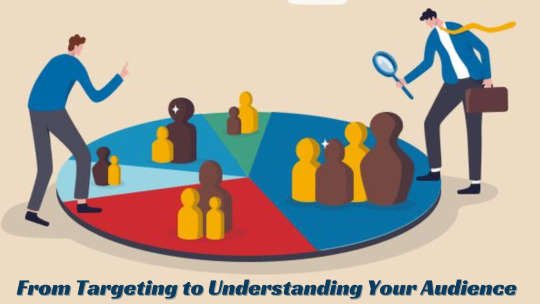
The Second Act of Innovation: Communicating the "Why"
Behind every technological advancement lies a reason for its creation. Ads that shine focus on this “why” elevate the product from commodity to cause. When storytelling reveals the brand’s purpose whether sustainability, inclusivity, or empowerment—it adds moral and emotional weight to the message.
In this respect, ads have become powerful competitor research tools for social storytelling. They no longer exist in a vacuum of consumerism; they participate in cultural discourse. The stories they tell often mirror society’s own digital evolution, making the ad a reflection of progress itself.
Technology Ad : The Bridge Between Code and Culture
At their best, technology advertising don’t just sell—they translate. They unveil the unseen, simplify the intricate, and make the future feel within reach. They serve as cultural translators, revealing not only what technology does, but why it matters.
In doing so, they amplify the human experience. They remind us that behind every breakthrough lies a story worth telling—one that inspires, informs, and invites us into a smarter, more connected world. You can also watch : Revolutionize Ads with PowerAdSpy's Smart Insights
youtube
Conclusion
Technology is advancing at a pace that can often feel overwhelming. But through the lens of narrative, it becomes approachable, even aspirational. In today’s hyper-connected marketplace, storytelling isn’t just a marketing strategy—it’s a survival tool. And in that light, technology ads are no longer technical briefings. They are cinematic declarations of possibility. They do more than describe innovation—they bring it to life.
The creators of tomorrow may wield not lenses or ink, but data and innovation. Through their vision, the future of promotion will influence not only what people buy, but how they think and dream.
0 notes
Text
What Should You Know Before Selling On A Dropshipping Marketplace On Facebook?

In the ever-expanding world of digital commerce, Facebook Marketplace has emerged as a powerful ecosystem for aspiring entrepreneurs to test and scale their dropshipping niches. What was once merely a platform for peer-to-peer resale has now evolved into a dynamic sales channel for e-commerce sellers, thanks to its enormous user base and integrated social selling capabilities. Before embarking on this journey, it’s essential to understand the platform’s fundamentals, its strategic advantages, and the subtle complexities that can either elevate or impede your dropshipping success.
Facebook Marketplace owes its strength to its unmatched accessibility. With billions of users interacting daily, it presents an extraordinary opportunity for organic visibility that few platforms can rival. This means even novice sellers can gain visibility without investing heavily in paid advertisements. However, this convenience is a double-edged sword — it invites high competition and requires a refined approach to stand out. Understanding the anatomy of product listings, from captivating images to optimized titles and accurate shipping details, can determine whether a product flies off the shelf or fades into oblivion.
Why Facebook Marketplace Works for New Dropshippers
For those entering the digital retail arena, Facebook Marketplace offers the flexibility to test products with minimal overhead. Unlike traditional e-commerce platforms that demand subscriptions, plugins, and complex backend systems, Facebook ad copy is both intuitive and free to use. Sellers can list items, manage communication, and track orders all within the app. This simplicity enables sellers to focus more on customer engagement and product quality than on technical maintenance.
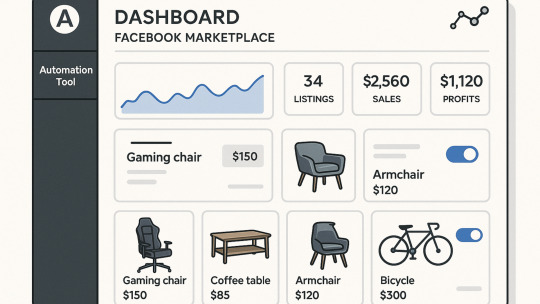
One significant advantage is the trust factor. Buyers feel more confident purchasing through Facebook profiles they can review. This social element introduces a layer of authenticity that other standalone platforms often lack. However, trust is a fragile currency. Response time, professionalism, and transparency regarding shipping timelines and return policies directly influence customer retention. For this reason, using reliable supplier tools and automation software is crucial. Platforms like DSM Tool, AutoDS, or ZIK Analytics integrate seamlessly, allowing for efficient product imports, inventory syncing, and price monitoring.
An illustrative dashboard view showing Facebook Marketplace listings being managed through an automation tool like AutoDS or DSM Tool.
Navigating the Algorithm and Buyer Psychology
Selling on Facebook dropshipping marketplace is not just about listing a product — it’s about aligning with the platform’s algorithm and buyer behaviour. Facebook’s AI favours listings that generate engagement and prompt responses. Therefore, sellers must be active, responsive, and strategic. Answering customer queries promptly, updating listings regularly, and maintaining high ratings contribute to better visibility.
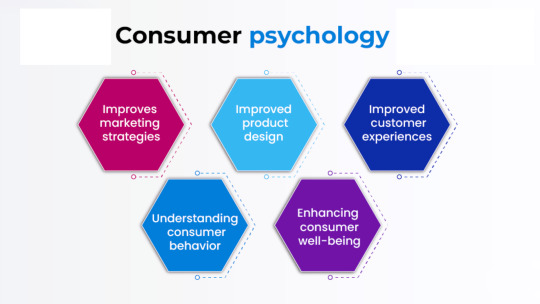
Understanding buyer psychology also plays a role. Unlike Amazon or eBay shoppers who often seek brand assurance, Facebook buyers are more price-sensitive and emotionally driven. Listings that feature vivid images, emotional triggers, and scarcity cues (like “only 3 left”) can significantly increase conversion rates. Yet, all marketing tactics must walk the fine line of compliance. Overpromising, misleading titles, or fake scarcity can lead to account suspension.
The Facebook marketplace landscape on Facebook is fast-evolving, requiring sellers to stay alert, flexible, and data-driven. Adapting quickly to trending products, leveraging insights from competitor listings, and utilizing software analytics tools is no longer optional but essential.
Crafting a Long-Term Strategy for Marketplace Success
While the initial traction may be easy to gain, sustaining success in a dropshipping marketplace demands a strategic mindset. Sellers should gradually consider expanding to Shops on Facebook, which offers additional features like storefront customization and checkout integration. This enables a transition from casual selling to building a credible e-commerce brand within Facebook’s ecosystem.
Additionally, long-term sellers must analyze buyer feedback, understand which products yield higher margins, and track seasonal demand patterns. Software like FBMFox or Ecomhunt allows sellers to monitor high-performing products and stay ahead of trends. Creating bundled offers, leveraging Facebook groups, and even integrating Messenger Bots can further amplify engagement and sales.
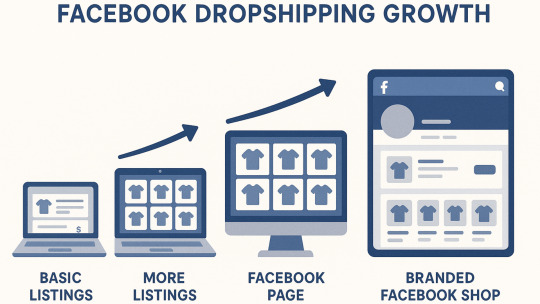
By embracing Facebook Marketplace with a well-informed strategy, proper automation tools, and a deep understanding of consumer behavior, sellers can transform this social selling hub into a powerful stream of revenue. Success here doesn’t rely solely on luck but on how deliberately and wisely one builds the foundation of their dropshipping business.
You can also watch: How To Find Best Performing Facebook Ads Using PowerAdSpy
youtube
Conclusion:
Mastering the art of selling on Facebook requires more than just listing a product — it demands a combination of strategic thinking, platform insight, and consistent execution. With its vast user base and simplified interface, Facebook Marketplace provides an ideal launchpad for beginners in the marketplace. However, sustained success depends on leveraging automation tools, understanding consumer behaviour, and adapting to market trends. By building trust, optimizing listings, and embracing long-term tactics, sellers can transform a modest side hustle into a thriving e-commerce venture within this powerful digital ecosystem.
#dropshippingmarketplace#facebookdropshipping#howtostartdropshippingmarketplace#dropshippingonfacebook#facebookmarketplacedropshipping#Youtube
0 notes
Text
What Is Social Media Competitor Analysis and Why It Matters?

Most businesses scroll past their competitors’ social media posts without thinking twice.
But those posts? They're full of answers.
You can learn what kind of content people respond to, what falls flat, and how often brands are showing up in the feed. If you're serious about growth, you can’t afford to guess your way through it. Studying your competitors online isn't shady. It’s smart. Because the better you understand what’s working for others in your space, the better you can shape your strategy.
That's the essence of social media competitor analysis figuring out where you stand and what to do next.
What Exactly Is Being Analyzed?
When you break it down, this process revolves around studying your competitors' presence on platforms like Facebook, Instagram, Twitter, LinkedIn, and others. But it’s not just about who’s posting what. The focus lies in tracking multiple performance indicators such as:
Types of content posted
Posting frequency and schedule
Engagement metrics (likes, shares, comments)
Follower growth and trends
Hashtag usage
Influencer partnerships
Paid promotions and ad creatives
All this information offers valuable insights into what resonates with audiences in your niche and how you can adjust your strategies to increase visibility and ROI.
Why Is Social Media Competitor Analysis Crucial for Businesses?
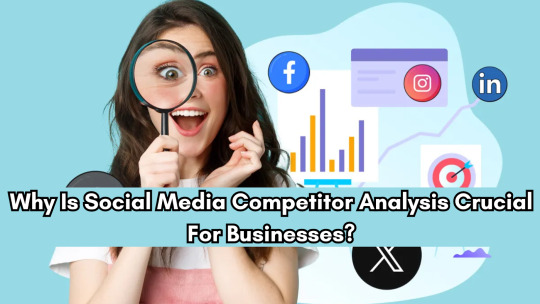
Whether you’re a small business owner, a social media manager, or part of a large digital marketing team, understanding what your competitors are doing can dramatically improve your ad marketing outcomes. Here’s why it matters:
Identifies Strengths and Weaknesses: It reveals what’s working for other brands and where they’re falling short, helping you craft a more effective strategy.
Sparks Content Ideas: You can get inspiration for new topics, themes, or content formats that might appeal to your target audience.
Benchmarks Your Progress: Comparing your performance with others in your industry sets realistic goals and benchmarks for improvement.
Improves Ad Strategy: By observing the type of ads your competitors run, the tools they use, and their messaging, you can fine-tune your own paid campaigns.
Refines Targeting: It identifies the most engaged audience segments, which can be used to refine targeting.
How Does It Benefit Long-Term Planning?
This type of analysis isn’t just a one-off task. When done consistently, it becomes a crucial part of your long-term social media strategy. Trends change fast online, and brands that adapt quickly often gain a competitive advantage. With regular monitoring, you stay up to date with:
Changing audience behaviors
New content trends
Shifts in platform algorithms
Emerging market competitors
This helps you remain agile and optimize your strategy based on real-world performance data.
What Should You Look For in Competitor Performance?

Understanding the mechanics behind top-performing content helps decode why certain posts go viral while others don’t. Key performance areas to monitor include:
Visual design and branding consistency
The tone of voice and messaging
Response rate and customer service in comments
Level of interaction and customer loyalty
Also, keep an eye on which influencers and brands they collaborate with and how effective those collaborations seem to be.
How to Conduct a Thorough Analysis
If you’re looking to get started with this type of research, follow these essential steps:
Identify Your Main Competitors: Start by listing 3–5 brands in your niche that target a similar audience. These can be direct or indirect competitors.
Audit Their Social Profiles: Examine the frequency, ad structure, and messaging of their posts. Note any patterns or standout features.
Analyze Engagement Metrics: Look for averages in likes, comments, shares, and follower growth. Compare them with your own data.
Check Paid Campaigns: Tools like ad libraries, poweradspy or analytics software can show you the types of paid ads they run and how frequently.
Spot Gaps and Opportunities: Look for areas where your brand can fill a content or engagement gap. Maybe they aren’t active on a particular platform, or maybe their response time is slow. This is your chance to shine.
What to Avoid During This Process?
While it's tempting to mimic your competitors' every move, this strategy can backfire. Remember, the goal isn’t to copy but to understand and improve. Avoid:
Blindly replicating content
Ignoring your brand voice
Obsessing over vanity metrics
Focusing too much on one channel
Use insights to refine your own strategy, not replace it with someone else’s.
You can also watch : Introducing 'My Projects' | PowerAdSpy’s New Way to Create Competitors List
youtube
Final Thoughts
Social media strategy without awareness of what others are doing is like sailing without a compass. Social media competitor analysis helps your brand stay relevant, engage better, and grow smarter. Whether you’re optimizing ad creatives or planning your next content calendar, knowing the broader landscape gives you the confidence to innovate rather than imitate.
#competitor tracking#social media tools#digital strategy#marketing analysis#content planning#Youtube
0 notes
Text
What Do You Mean By Fashion Marketing?

In a society where trends evolve faster than technology and consumer loyalty is driven by aesthetics and emotion, the question is more than just academic. It is the gateway to understanding how art, commerce, psychology, and storytelling converge to build powerful brands and lasting impressions.
Fashion marketing isn’t just about selling clothes — it’s about selling a lifestyle, crafting narratives, and capturing desire before the customer even realizes it. It’s an intricate balance of creativity and commerce, deeply rooted in cultural shifts, technological advances, and visual strategy.
Let’s unfold this dynamic discipline and uncover how it powers the engine of the global fashion industry.
Understanding to Market fashion: More Than Meets the Eye
So, what do you mean by marketing of fashion exactly?
It is the strategic promotion and branding of fashion products to a targeted audience. It involves everything from trend forecasting, market research, and pricing strategies, to content creation, influencer collaborations, and ad campaign execution.
Each stitch, each slogan, each social media post is woven with intent — crafted to resonate emotionally and convert desire into action.
This form of marketing doesn’t just drive sales. It shapes perception, reinforces brand identity, and influences culture.
Key Components That Define Marketing

To fully appreciate the weight of the question one must dive into its core pillars:
1. Trend Forecasting & Market Analysis
Understanding future fashion trends is fundamental. Software like WGSN (Worth Global Style Network) provides predictive analytics, cultural insights, and design inspiration backed by global data.
Features: Color palettes, consumer behavior forecasts, product design trends.
Specs: AI-driven insights, curated reports by industry experts, global data coverage.
Importance: Ensures collections are market-relevant months before they hit the racks.
2. Brand Storytelling & Visual Identity
In fashion, story sells. A compelling brand narrative supported by aesthetic consistency is crucial. Tools like Canva Pro and Adobe Creative Suite empower marketers to design mood boards, brand decks, and social content aligned with the brand’s DNA.
Canva Pro Specs: Drag-and-drop editor, brand kits, premium visuals.
Adobe Specs: Photoshop, InDesign, Illustrator — professional-grade design tools.
Importance: Transforms abstract brand values into compelling visual languages.
3. Digital & Social Media Strategy
Modern marketing of fashion thrives on visibility. Platforms like Hootsuite and Later allow brands to automate posts, monitor audience engagement, and strategize across Instagram, TikTok, and Pinterest.
Specs: Social calendar planning, real-time analytics, multi-platform scheduling.
Importance: Consistency and timing are critical — especially in an algorithm-driven landscape.
Psychology Meets Aesthetics: The Power of Emotional Connection

Fashion isn’t functional — it’s emotional. A fashion marketer must understand how to evoke aspiration, ignite self-expression, and create identity association. Campaigns must move hearts before they move products.
Consider luxury fashion houses like Gucci or Balenciaga. Their marketing design doesn’t sell fabric — it sells rebellion, nostalgia, futurism. This is where emotional branding and semiotic design become powerful tools.
Marketing in E-Commerce: Where Clicks Replace Catwalks
The pandemic accelerated the digital revolution in fashion. E-commerce is no longer just an option — it’s the frontline of fashion sales. Platforms like Shopify offer all-in-one e-commerce solutions tailored for fashion brands.
Features: Mobile optimization, custom templates, seamless checkout.
Specs: Integrated marketing tools, real-time sales analytics, inventory management.
Importance: Converts the brand story into an accessible, engaging shopping experience.
Why Marketing Matters Now More Than Ever

In today’s fragmented attention economy, brands compete not just on quality, but on relevance, personality, and experience. With sustainability, inclusivity, and digital transformation taking center stage, fashion digital marketing has evolved from a function to a mission.
Knowing what this type of marketing means today is the difference between simply existing and thriving in the market. It requires emotional intelligence, technological fluency, cultural sensitivity, and a storyteller’s soul.
You can also watch this video: How to Search Ads with the Domain Name - How to Tutorial Series | PowerAdSpy
youtube
Conclusion: Marketing fashion Is the Fabric of the Brand
So, It’s the invisible thread that weaves creativity into commerce, aesthetics into aspiration, and trends into trust.
It's not just about selling — it’s about communicating vision, creating impact, and crafting desire with precision and passion.
Whether you’re an aspiring marketer, a designer dreaming of launching your label, or a curious fashion enthusiast — mastering fashion marketing will elevate your perspective and empower your future.
Remember: behind every great outfit is an even greater story. And behind that story, stands a fashion marketer who made you feel something first.
0 notes
Text
Why Should You Use Google Ads Editor for Your Campaigns?

In the fast-paced realm of digital marketing, where precision and agility are paramount, Google Ads Editor emerges as a strategic powerhouse for campaign management. When milliseconds can define market dominance, relying solely on browser-based interfaces is no longer sufficient. A tool that empowers advertisers to operate offline, make bulk changes swiftly, and streamline their workflows is not merely a convenience—it’s a necessity.
Its functionality supports marketers in managing complex account structures, ensuring error-free campaign deployment while working in high-pressure environments. With its robust features and intuitive design, advertisers gain a competitive edge through seamless optimization and operational efficiency.
Unlocking the Core Features and Strategic Value
Ads Editor of Google allows users to download their entire account and make bulk changes offline. This includes editing ad groups, updating bids, adjusting targeting, and even crafting new campaigns without affecting live data until you're ready. Some standout features include:

Bulk Editing: Modify thousands of ads or keywords simultaneously.
Advanced Filtering: Easily locate elements using powerful search tools.
Error Detection and Custom Rules: Identify issues before changes go live.
Cross-Account Copying: Seamlessly replicate campaigns across multiple accounts.
Offline Access: Work from anywhere, regardless of internet connectivity.
Spec-wise, it performs best on a 64-bit system (Windows 10+ or macOS 11+), with 8 GB RAM or more and SSD storage. For agencies and enterprises, this results in quicker campaign deployment, enhanced accuracy in implementation, and reduced operational delays—ensuring a smoother and more reliable advertising workflow.
The software becomes even more impactful when integrated into broader task management strategies, improving schedule adherence, workflow automation, and operational clarity.
Top 3 Tools That Complement Your Ad Campaign Management
While offline editing and bulk campaign control offer a major advantage, using additional tools can significantly expand your advertising strategy. The following three platforms are among the most effective for enhancing insight, creativity, and optimization.
#1 PowerAdSpy – Competitive Ad Intelligence Tool

PowerAdSpy provides comprehensive ad intelligence by allowing users to monitor and analyze advertisements across major platforms like Facebook, Instagram, YouTube, and Google. With advanced filtering options by niche, engagement, and ad format, it lets marketers dissect top-performing ads from competitors. This insight helps in designing more effective creatives, refining audience targeting, and aligning strategies with industry trends. By informing ad content and structure, PowerAdSpy lays a strategic foundation for high-performing campaigns.
#2 SpyFu – Deep SEO and PPC Competitive Insights
SpyFu focuses on keyword research and competitive analysis in both organic and paid search spaces. It allows users to see the keywords competitors are buying on Google Ads, how much they’re spending, and which ad variations they’re running. The platform also reveals long-term performance ad trends and backlink strategies. For marketers focused on improving PPC outcomes and dominating search results, SpyFu offers actionable insights that can inform both strategic planning and tactical adjustments.
#3 BigSpy – Cross-Platform Ad Inspiration at Scale

BigSpy is a powerful ad database that tracks millions of ads across platforms such as Facebook, TikTok, Google, Twitter, and Pinterest. Its real-time ad library helps marketers uncover trending content and identify high-converting creatives. With filtering by country, industry, and platform, it enables strategic creative development and testing. BigSpy’s sheer volume of searchable ads makes it a go-to tool for brands seeking inspiration and validation.
Together, these tools contribute essential functions—intelligence gathering, creative testing, and simplified campaign oversight—that elevate your digital advertising efforts. Each enhances a specific phase of the campaign lifecycle, creating a well-rounded, strategic ad management approach.
You can also watch : How to Search Google Ads using PowerAdSpy: A Step-by-Step Tutorial Series
youtube
Final Thoughts
In a landscape where timing, precision, and strategic clarity are non-negotiable, Google Ads Editor delivers a suite of features that modern advertisers cannot afford to ignore. It offers a refined approach to campaign management, freeing marketers from browser limitations and injecting efficiency into every stage of the advertising lifecycle.
For professionals looking to operate at the pinnacle of campaign performance, Ads Editor of Google isn’t just a tool—it’s an essential extension of strategic execution. Its value becomes even more evident in high-stakes scenarios—product launches, seasonal promotions, or rapid-response campaigns—where every second counts and even minor errors can be costly. The ability to draft, review, and deploy changes in a controlled offline environment ensures consistency, accuracy, and speed. By integrating seamlessly into existing workflows, it not only enhances productivity but also empowers teams to execute with confidence, knowing they have full control over every facet of their advertising strategy.
#google ads editor#google ads#google ads editor tutorial#how to use google ads editor#google adwords editor#Youtube
0 notes
Text
Unlocking Success with Google Ads for Business: Your Digital Growth Catalyst
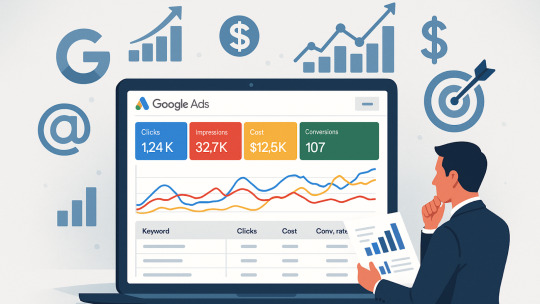
In an age where attention is currency and visibility equates to viability, the digital battlefield demands more than just a presence—it requires precision. This is where Google Ads for Business emerges not merely as a platform, but as a powerful instrument that crafts relevance, drives conversions, and maximizes ROI. Whether you're a small startup or a seasoned enterprise, the success equation today is incomplete without this potent advertising tool.
Why Businesses Can't Afford to Overlook Google Ads
The sheer dominance of Google as a search engine makes Google Ads a strategic no-brainer. With billions of queries processed every day, the platform serves as a bridge connecting businesses with their ideal customers at the exact moment of intent. Unlike traditional advertising, this is not about hope—it’s about calculated relevance.
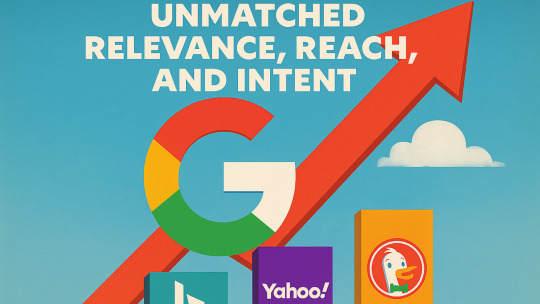
When a potential customer types a keyword, they’re expressing a need. Google Ads intercepts this micro-moment, delivering your business right when the customer is ready to act. This is digital serendipity, algorithmically engineered.
A Glimpse into the Mechanism: How Google Ads Works
At its core, Google Ads operates on a pay-per-click (PPC) model, ensuring your investment translates directly into measurable action. Here are some essential features that distinguish it as a top-tier advertising solution:
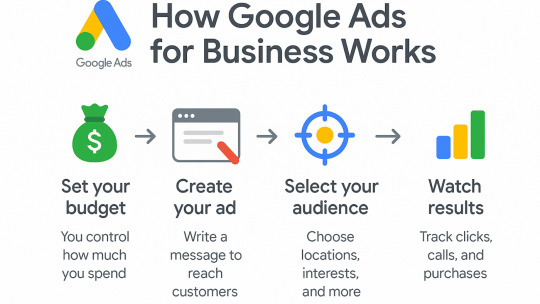
Keyword Targeting: Reach customers actively searching for products or services like yours by bidding on relevant search terms.
Location-Based Ads: Customize your campaigns geographically to attract the right audience in the right place.
Ad Extensions: Enhance your listings with links, calls, locations, and reviews, improving click-through rates and user experience.
Smart Bidding: Utilize machine learning algorithms to automatically adjust your bids for maximum conversion potential.
Comprehensive Analytics: Access in-depth performance metrics that help refine strategies and increase ROI with every iteration.
These specifications form the foundation of a robust and scalable digital marketing strategy. In essence, Google Ads transforms passive digital presence into active customer engagement.
The Role of Google Ads in Business Expansion
Every growing business reaches a point where organic reaches plateaus. That’s when paid campaigns become imperative—not just to accelerate traffic, but to do so with strategic intent. Google My Business Ads provides that exact lever, empowering companies to amplify their visibility without compromising their marketing budget.
Its importance lies in control. Businesses can dictate how much to spend, who to target, and when to show up—all backed by real-time data. This flexibility is particularly beneficial for small and mid-sized enterprises aiming for smart scaling without financial overreach.
Moreover, unlike traditional advertising which casts a wide and often wasteful net, Google Ads focuses on qualified leads. This efficiency is not just intelligent—it’s indispensable.
Software That Simplifies Google Ads Management

While the Google Ads interface itself is comprehensive, managing multiple campaigns can be daunting. That’s where software revolutionizes ad management for businesses of all sizes.
Key Features of WordStream Advisor:
20-Minute Work Week: Automate and optimize campaigns with weekly performance insights.
Cross-Platform Management: Handle Google Ads, Facebook Ads, and Bing Ads from one unified dashboard.
Performance Grader: Get instant reports on how your campaigns stack up against competitors.
Actionable Recommendations: Improve Quality Score, click-through rate (CTR), and cost per acquisition (CPA) using AI-driven suggestions.
This tool isn't just an add-on—it’s a strategic ally, ensuring that every dollar spent works harder and smarter for your business goals.
Smart Strategy, Sustainable Growth
The digital ecosystem doesn’t reward the loudest voice—it rewards the most relevant one. And Google Ads for Business offers the ultimate gateway to relevance. By combining high-intent targeting, budget control, and measurable outcomes, it redefines how modern businesses approach customer acquisition.
With tools like WordStream Advisor, even the most resource-limited teams can navigate the advertising space with confidence and clarity. This democratization of digital marketing is not just a trend—it’s the new norm.
You Can Also Watch :- Introducing 'My Projects' | PowerAdSpy’s New Way to Create Competitors List
youtube
Final Reflections: Advertising with Intent
In the ever-evolving digital marketplace, success belongs to those who not only show up but do so with intent, insight, and innovation. Google Ads equips businesses to do exactly that—seamlessly, intelligently, and with measurable impact.
Whether you're aiming to generate leads, drive traffic, or boost eCommerce sales, your journey begins with a single search. Make sure it ends with your business in the spotlight.
0 notes
Text
Strategic Benefits Beyond The Dashboard: Why the LinkedIn Insight Tag Matters?
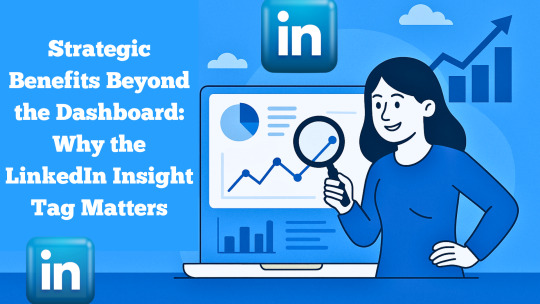
In an era where data-driven decision-making shapes success, not utilizing every analytic tool at your disposal is a disservice to your brand. The LinkedIn Website Tag plays a critical role in aligning marketing spend with business outcomes. Its power lies not only in collecting raw data but in translating that data into patterns, predictions, and performance enhancements.
Moreover, as privacy and transparency become top priorities, LinkedIn ensures that its tracking mechanism complies with global standards—offering peace of mind along with precision.
Transforming Business Intelligence
In the digital realm, where data is the new currency, decoding customer behaviour has become a pivotal aspect of every marketing strategy. The LinkedIn Insight Tag is not just a simple tracking code—it's an intelligent gateway that opens up a world of behavioural analytics, lead generation, and audience insights. For marketers who wish to optimize every penny spent and tailor campaigns with surgical precision, integrating the LinkedIn Website Tag becomes not only vital but transformational.
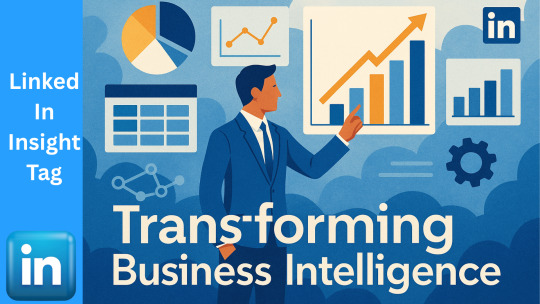
A Glimpse into Precision Marketing
Modern marketing is no longer about casting wide nets; it’s about deploying smart strategies that tap into behavioural data and conversion metrics. It is at this point that the LinkedIn Tag showcases its transformative capabilities in data-driven marketing By embedding a lightweight JavaScript code onto your website, businesses gain access to a vast reservoir of actionable data—ranging from page views to granular conversion tracking.
Each metric captured via the Insight Tag feeds directly into LinkedIn Ad Campaign Manager, providing a panoramic view of how visitors interact with your site post-ad engagement. The result? Enhanced retargeting capabilities and a refined advertising funnel that aligns with audience behaviour
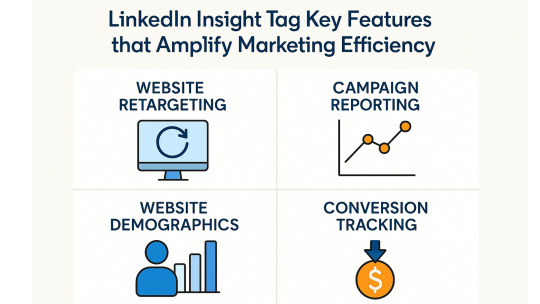
Advanced Conversion Tracking
With the Insight Tag, you don’t just track page visits—you track purpose. It reveals which ad campaigns lead to real actions like downloads, signups, or purchases. This empowers marketers to calculate ROI with definitive clarity and tweak campaigns in real time.
Rich Demographic Data
Imagine knowing the job titles, industries, and even seniority levels of users visiting your site. The Insight Tag makes this possible. By aligning on-site activity with LinkedIn’s professional network, it provides unmatched audience segmentation for hyper-targeted campaigns.
Seamless Website Retargeting
The software’s retargeting capability allows advertisers to create customized ad experiences for site visitors. Whether they abandoned a cart or explored a service page, you can reconnect with them through tailored content—enhancing conversion probability.
Integration with LinkedIn Campaign Manager
The tag’s deep integration with Campaign Manager ensures that marketers don’t just gather data—they leverage it. From budget allocation to audience reshaping, the tag fuels a strategic loop of continuous optimization.
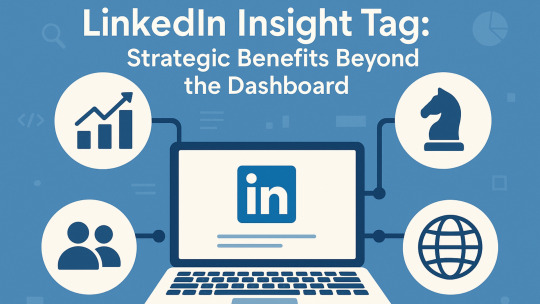
imized Ad Spend: By revealing which campaigns drive actual conversions, businesses can eliminate wasteful spending and allocate resources where they matter most.
Informed Content Strategies: Understanding user behavior post-click allows marketers to refine content tone, format, and placement—enhancing engagement and dwell time.
Competitive Edge: Companies that integrate tools like the LinkedIn Insight Tag gain a distinct advantage over competitors still relying on guesswork and fragmented analytics.
Enhanced B2B Targeting: With LinkedIn being a professional network, the data collected is inherently business-relevant—something that generic tracking tools often fail to provide.
Seamless Implementation and Scalability
Installing the LinkedIn Website Tag is straightforward, requiring only a few lines of code placed in your website’s header. Once integrated, its impact scales with your growth, accommodating websites of all sizes and complexities. It harmonizes well with other platforms and analytics software, forming a unified data ecosystem that boosts strategic marketing efforts.
You can also watch: How To Search LinkedIn Ads Using PowerAdSpy: A Step-by-Step Guide
youtube
Final Thoughts
In the vast landscape of digital advertising, data-backed strategies are no longer optional—they are imperative. The LinkedIn Website Tag emerges as a powerful tool that does more than just track—it empowers. From conversion attribution to precise retargeting, it is a cornerstone of modern marketing intelligence.
By leveraging its sophisticated features and aligning them with your business goals, you not only improve your campaign performance but also enrich your understanding of the audience that truly matters.
Let the LinkedIn Website Tag be the bridge between your brand’s message and the minds that need to hear it.
0 notes
Text
Is Online Advertising the New Word of Mouth?
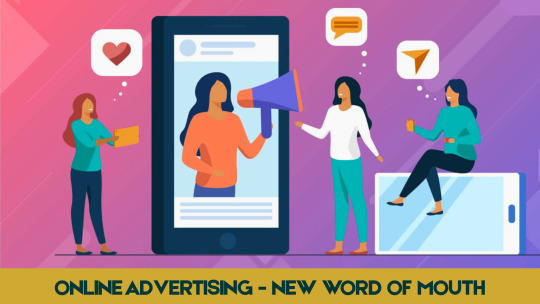
In a time where attention spans are shrinking and digital content is overflowing, a pressing question stands out in the marketing world: Can Online Advertising truly capture the trust and authenticity that word-of-mouth once commanded? With consumers scrolling endlessly through content and algorithms shaping their purchasing paths, the digital ad ecosystem has transcended traditional definitions.
Advertising has evolved rapidly, with precision-driven strategies and a strong personal touch. What was once shared around dinner tables is now transmitted through pixels and data.
This article investigates how digital advertising is not only replacing but refining the legacy of word-of-mouth influence.
The Shift from Talk to Target
From Friends’ Advice to AI Precision
Traditionally, people relied on conversations with peers to guide purchasing decisions. Today, algorithmic intelligence predicts preferences before users even articulate them. Digital advertising trends have moved beyond generic promotions into the realm of intuitive personalization—replicating the subtlety and accuracy of a friend’s recommendation.
AI-driven platforms assess behavioural cues, browsing patterns, and psychographic data.
The delivery of tailored ads creates an experience that feels less like a pitch and more like a suggestion from someone you trust.

This form of intelligent targeting is the cornerstone of what makes digital advertising so eerily effective—and perhaps more persuasive than the human world itself.
Understanding What Works—Before Spending a Dime
Online marketers no longer have to rely on guesswork. With ad intelligence platforms redefining how campaigns are crafted, success now begins with insight—not experimentation. Among these tools, three platforms stand out by offering unique capabilities that help decode competitors’ strategies and optimize ad performance marketing before a single dollar is spent.
PowerAdSpy: The Digital Detective’s Toolkit
As digital advertising continues to evolve, marketers face the constant challenge of creating campaigns that not only capture attention but convert with precision. This is where PowerAdSpy emerges as an indispensable ally. Far more than a standard ad-tracking tool, PowerAdSpy is a comprehensive competitive intelligence platform that empowers brands to dissect, decode, and dominate the digital ad landscape.
PowerAdSpy was built with one clear purpose: to eliminate guesswork from the advertising process. By providing access to millions of real-time ad creatives, it enables advertisers to understand what’s already working in the market—before they commit a single cent to test.
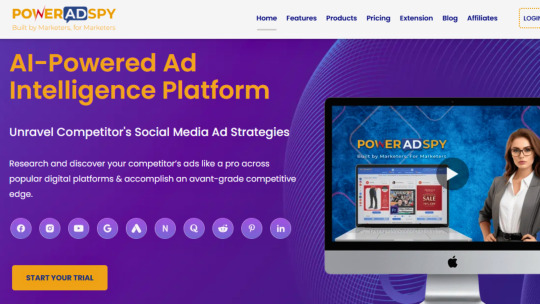
AdSpy: Scaling Reach with Precision
Designed for scale and advanced segmentation, AdSpy caters to marketers running global, multilingual campaigns. Its comprehensive archive and customizable search filters make it ideal for deep dives.
BigSpy: Simplified Intelligence for eCommerce Growth
BigSpy excels at balancing simplicity with strategic depth. Especially popular among eCommerce brands, it offers a user-friendly platform bolstered by AI-driven recommendations.
The Psychology of Trust in Digital Advertising
Mirroring Human Behaviour Through Data
Trust was once earned in person. Now, it’s engineered through precision and familiarity. Digital advertising doesn't just sell; it learns. The more a user engages, the more accurate the system becomes—building credibility through consistency.
Repeated exposure to well-targeted content cultivates digital trust.
Personalized ads simulate the subconscious cues used in face-to-face recommendations.

This phenomenon, often referred to as algorithmic rapport, is rewriting the boundaries of modern marketing influence.
Where the Future is Headed
From Viral Campaigns to Predictive Narratives
The boundary between promotion and conversation grows ever more subtle. With advancements in machine learning, ad platforms are evolving from reactionary to predictive tools.
Marketers can now anticipate trends before they peak.
Campaigns are increasingly narrative-driven, mimicking human storytelling techniques.
Digital advertising is no longer about interrupting attention—it’s about integrating into it.
You can also watch : How to Search Google Ads using PowerAdSpy: A Step-by-Step Tutorial Series
youtube
Conclusion: Digital Dialogue or Mere Promotion?
Has the digital realm turned online advertising into the new voice of trust? By most measures, it has grown into something far more dynamic. It represents a fusion of human trust and technological precision—word of mouth amplified by data, extended by digital reach, and perfected through constant optimization. No longer confined to personal circles, influence now travels at the speed of connectivity, shaping decisions in real-time. In this hyperconnected era, Online Advertising isn’t merely a continuation of marketing—it is the future of authentic, scalable influence.
#Online advertising#display advertising#advertising online#online marketing#online advertising business#Youtube
0 notes
Text
Is Facebook Business Suite the Ultimate Tool for Managing Your Brand Online?

In the dynamic world of digital marketing, where attention spans are fleeting and brand loyalty is hard-earned, the need for streamlined, intelligent, and user-centric tools is more important than ever. Businesses, both big and small, are on a constant quest to engage audiences, maintain consistency, and respond to customers—without getting buried under endless tabs and fragmented platforms. Enter Facebook Business Suite, Meta’s answer to the growing demand for an all-in-one social media management experience.
This isn't just another dashboard. It's a digital command center crafted for the modern-day brand manager who seeks clarity, control, and connection—all in real time. But the question remains: is it truly the ultimate tool for managing your brand online?
A Tool Designed for Simplicity and Power
What sets a good business tool apart from a great one is not just how many features it offers, but how seamlessly those features work together. Facebook Business Suite doesn’t overwhelm—it empowers.
With its clean, intuitive interface, it allows businesses to manage both Facebook and Instagram activities from one unified platform. This means one login, one dashboard, and one strategy. For time-strapped entrepreneurs and marketing professionals, that level of consolidation is not just convenient—it’s essential.
Features That Matter When You’re Trying to Matter
Let’s break down what this suite truly offers because it’s more than just a posting tool.
1. Unified Content Management
You can create, schedule, and publish content across both Facebook and Instagram simultaneously. This dual-posting feature not only saves time but ensures brand voice and visual storytelling remain consistent. Whether you're launching a campaign or simply pushing out daily updates, managing content has never been this fluid.
2. Centralized Messaging Hub

All your customer messages—whether from Facebook Messenger, Instagram Direct, or comments—flow into one inbox. No more toggling between apps or missing crucial inquiries. That’s relationship-building made easier.
3. Real-Time Insights and Analytics
Understanding what works and what doesn’t is the heartbeat of digital growth. Facebook and Instagam for Business Suite offers clear and easy-to-understand performance metrics: post reach, engagement, audience behavior, and ad performance. It's not just data—it's direction.
4. Advertising Made Accessible
You don’t need to be a digital marketing guru to run effective. With simplified ad creation and performance tracking built into the platform, even newcomers can confidently launch and manage campaigns.
Why Facebook Business Suite Matters for Brands Today?
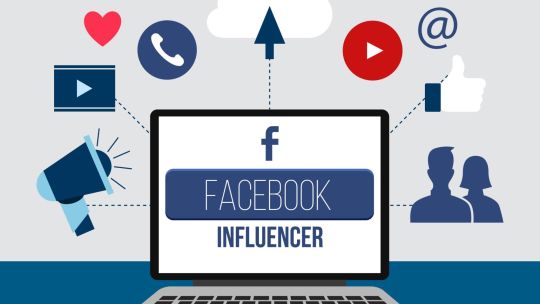
In an age where digital presence like facebook and instagram ads is often the first impression, brand managers must balance authenticity with agility. Customers expect fast responses, regular content, and meaningful engagement. Facebook Business Suite meets those expectations without demanding a steep learning curve.
It also scales beautifully. Whether you're a solo business owner, a startup team, or a growing enterprise with a full marketing department, the tool adapts to your needs. That’s not just functionality—it’s future-readiness.
Beyond features, the true strength of the suite lies in its philosophy: simplicity without sacrificing capability. And that is a rare combination.
Where It Stands Compared to Other Tools
While there are plenty of third-party social media management tools—many with robust features—what gives Facebook Business Suite an edge is native integration. Being built by Meta itself means it gets first access to updates, algorithm changes, and feature enhancements. It’s a direct line into the core of two of the world’s biggest social platforms.
You don’t have to worry about API limitations, syncing delays, or losing functionalities due to third-party restrictions. Everything is optimized to run as smoothly as the platforms themselves.
A Strategic Partner, Not Just a Tool

Calling Facebook Business Suite a “tool” almost feels like an understatement. In reality, it’s more of a strategic partner—one that empowers you to manage the voice, vision, and value of your brand from one place. It allows you to focus on storytelling, connecting, and growing, while it handles the logistics of content, communication, and analysis.
If your brand is active on Facebook and Instagram (and let’s face it, most are), integrating this platform into your daily workflow can feel like breathing fresh air into your strategy.\
You can also watch:- Search Facebook Ads With Exact or Relevant Keyword Phrase Using PowerAdSpy
youtube
The Verdict: Is It the Ultimate Tool?
While every business has its unique needs, it’s hard to ignore the holistic benefits that Facebook Business Suite brings to the table. It simplifies complex tasks, centralizes key functions, and empowers users with insights that drive smarter decisions.
So, is it the ultimate tool for managing your brand online?
If your goal is to create consistent, engaging, and data-driven content while staying deeply connected to your audience—yes, it just might be.
#facebook business suite#social media management#meta business tools#instagram scheduling#facebook marketing#Youtube
0 notes